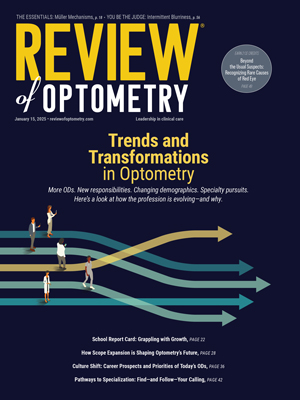Though invaluable in posterior segment imaging, OCT is less definitive when assessing angle closure, according to a new study in the British Journal of Ophthalmology. Researchers evaluated 2,027 subjects (with no relevant ocular history) using both swept-source anterior segment OCT and traditional gonioscopy, and found the two approaches provided different anterior chamber dimensions, leading to false positive angle-closure diagnoses based on the OCT readings.
Using an angle-closure definition of iridotrabecular contact of ≥35%, ≥50% and ≥75% of the circumferential angle, the team found OCT incorrectly identified 14.7% of the angles as closed when the angle measured ≥50% of the angle was closed. Both OCT and gonioscopy revealed these false positive eyes still had significantly wider and deeper anterior chambers compared with the correctly identified angle-closure eyes.
The researchers noted a deeper anterior chamber depth and a lower lens vault were both significantly associated with false positives on OCT—more than half of the false positive eyes had short iridotrabecular contact and 39% had irregular contact, they noted in their study.
| Porporato N, Baskaran M, Tun TA, et al. Understanding diagnostic disagreement in angle closure assessment between anterior segment optical coherence tomography and gonioscopy. Br J Ophthalmol. September 6, 2019. [Epub ahead of print]. |


